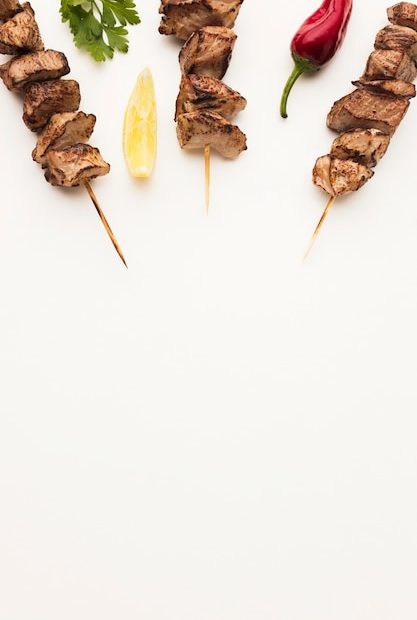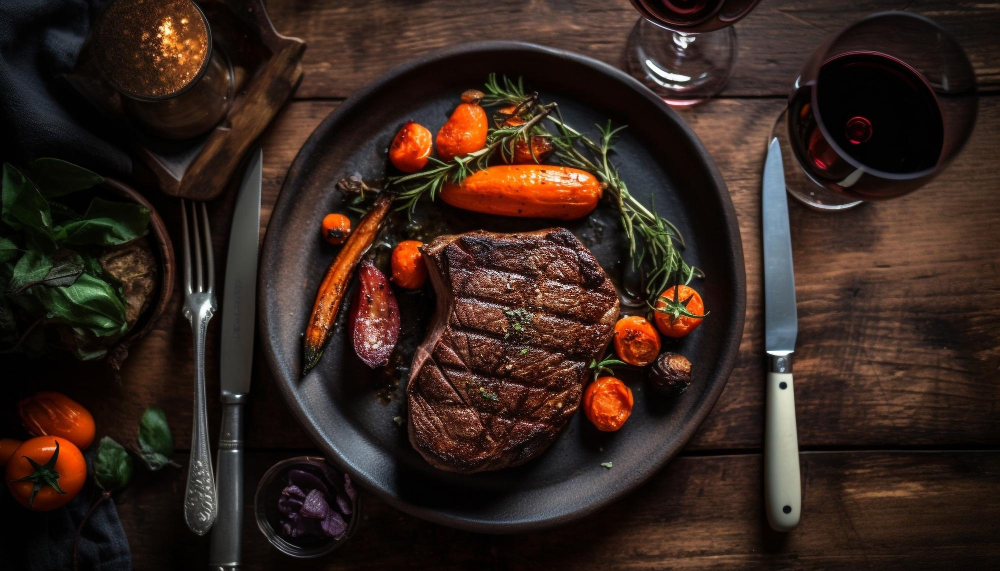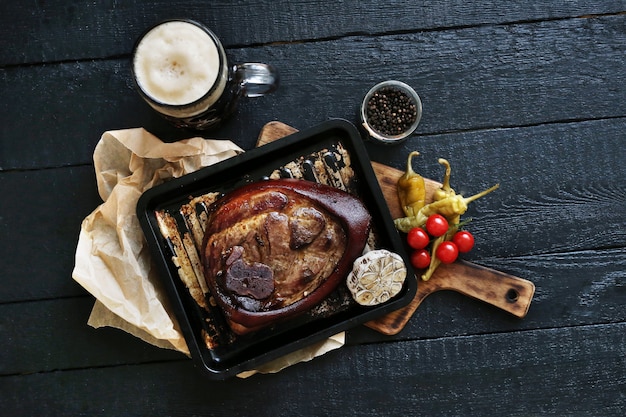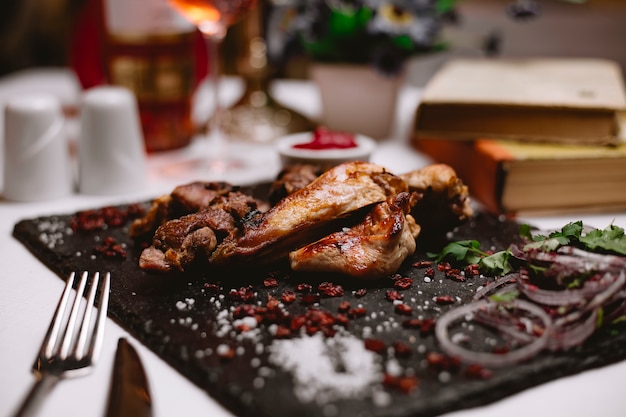Should you marinate lamb before cooking?
The question of whether to marinate lamb before cooking is a common one, especially among those who want to enhance the flavor, tenderness, and juiciness of this delicious meat. While marinating can be a fantastic way to add depth and complexity to many dishes, the decision to marinate lamb ultimately depends on personal preference and the specific cut of meat being used.
Factors to consider
Before diving into the pros and cons of marinating lamb, it’s important to consider a few factors:
- The quality of the lamb: High-quality, well-marbled lamb cuts may not require marinating as they already possess excellent flavor and tenderness.
- The desired flavor profile: Marinating lamb allows you to infuse it with various herbs, spices, and other ingredients to create unique and vibrant flavors.
- The time available: Marinating typically requires some advance preparation, as the meat benefits from being left in the marinade for a certain amount of time.
The benefits of marinating lamb
Marinating lamb can offer several advantages:
- Improved tenderness: The enzymes present in marinades help break down the proteins in the meat, resulting in a more tender and juicy final dish.
- Enhanced flavor: Marinating lamb allows you to introduce additional flavors into the meat, helping to complement or elevate its natural taste.
- Moisture retention: Certain marinades can help the meat retain its moisture during cooking, preventing it from drying out.
“Marinating lamb can help enhance its tenderness and flavor, making it a worthwhile technique for many recipes.”
The drawbacks of marinating lamb
While marinating can be beneficial, it’s essential to consider the potential downsides:
- Time constraints: Marinating lamb often requires planning ahead, as the meat should ideally be left in the marinade for several hours or overnight.
- Cost and waste: Some marinades require a variety of ingredients, which can add to the overall cost of the dish. Additionally, any leftover marinade typically cannot be reused due to potential cross-contamination.
- Over-marinating: Leaving lamb in a marinade for too long can result in an overly tenderized texture or overpowering flavors, ultimately compromising the overall taste.
Do you need to brown lamb before roasting?
Lamb is a succulent and flavorful meat that is commonly enjoyed in the United Kingdom. When preparing lamb for roasting, you may wonder whether it is necessary to brown the meat beforehand. While browning the lamb before roasting is not mandatory, it can greatly enhance the flavor and appearance of the final dish.
The benefits of browning lamb
Browning lamb before roasting helps to develop a rich, caramelized crust on the exterior of the meat. This crust adds depth and complexity to the flavor profile, resulting in a more delicious and satisfying dish. Additionally, browning the lamb creates an appealing golden-brown color that is visually pleasing when served.
Another advantage of browning lamb is that it helps to render out some of the fat, resulting in a leaner and less greasy roast. This can be particularly beneficial for individuals who are conscious about their fat intake or prefer a leaner cut of meat.
How to brown lamb for roasting
To brown lamb before roasting, follow these simple steps:
- Start by seasoning the lamb with salt, pepper, and any desired herbs or spices.
- Heat a large oven-safe skillet or roasting pan over medium-high heat.
- Add a small amount of cooking oil or butter to the pan and allow it to heat up.
- Place the lamb in the pan and sear it on all sides until a golden-brown crust forms.
- Once the lamb is browned, transfer it to a preheated oven to finish cooking according to your desired doneness.
Note: If you prefer, you can skip the browning step and simply season the lamb before roasting. However, keep in mind that the end result may not have the same depth of flavor or attractive appearance.
“Browning lamb before roasting helps to develop a rich, caramelized crust on the exterior of the meat.”
Whether you choose to brown your lamb before roasting or not, the key is to ensure that the meat reaches the recommended internal temperature for safe consumption. Use a digital meat thermometer to accurately measure the temperature and avoid overcooking or undercooking the lamb.
| Doneness | Temperature (in ℃) |
|---|---|
| Rare | 60-62 |
| Medium rare | 63-65 |
| Medium | 66-68 |
| Medium well | 69-71 |
| Well done | 72+ |
Ultimately, the decision to brown lamb before roasting is a matter of personal preference. It can elevate the taste and appearance of the dish, but it is not essential. Experiment with different methods to find the one that best suits your culinary preferences, and enjoy the deliciousness of roasted lamb!
Should lamb be cooked slow or fast?
When it comes to cooking lamb, there are different schools of thought on whether it should be cooked slow or fast. The answer largely depends on the cut of lamb that you are working with and the desired end result.
Slow Cooking
Lamb cuts that are tougher and have more connective tissue, such as shoulder or shanks, benefit from slow cooking methods like braising or stewing. Slow cooking allows the connective tissues to break down, resulting in tender and flavorful meat. This method is ideal for dishes like lamb curry or lamb ragout.
Pro tip: For the perfect slow-cooked lamb, marinate the meat overnight in a mixture of herbs, spices, and acid (such as lemon juice or vinegar) to help tenderize it further.
Fast Cooking
On the other hand, cuts of lamb that are more tender, like lamb loin or lamb fillet, can be cooked quickly and at higher temperatures. Fast cooking methods such as grilling, roasting, or pan-searing are best suited for these cuts. This allows the lamb to develop a nice crust while keeping the interior tender and juicy.
Pro tip: To retain moisture and flavor, let the lamb rest for a few minutes after cooking before slicing into it. This helps the juices redistribute throughout the meat.
Considerations
Ultimately, the choice between slow or fast cooking depends on personal preferences and the specific recipe you’re following. Some people enjoy the tenderness and richness of slow-cooked lamb, while others prefer the simplicity and speed of fast cooking methods.
In general, it’s important to remember that lamb is a versatile meat that can be cooked in a variety of ways. Experimenting with different cooking techniques and recipes can help you discover your preferred method for preparing lamb.
| Cut of Lamb | Recommended Cooking Method |
|---|---|
| Shoulder or Shanks | Braising or stewing |
| Loin or Fillet | Grilling, roasting, or pan-searing |
In conclusion, there is no one-size-fits-all approach to cooking lamb. Whether you choose to cook it slow or fast depends on the cut of lamb and the desired outcome. So, don’t be afraid to try out different methods and techniques to find what works best for you!
Should lamb be wrapped in foil?
When it comes to cooking lamb, there is always a debate about whether or not to wrap it in foil. Some argue that wrapping lamb in foil helps to retain moisture and flavor, while others believe that it can result in a less crispy and flavorful crust. Let’s delve deeper into this matter and determine the best approach to cooking lamb for delicious results.
Pros of wrapping lamb in foil
One of the benefits of wrapping lamb in foil is that it helps to keep the meat moist during the cooking process. The foil acts as a barrier, trapping in the natural juices and preventing the lamb from drying out. Additionally, wrapping the lamb in foil can help to infuse flavors and spices into the meat, resulting in a more flavorful and tender dish.
However, it’s important to note that if you prefer a crispy crust on your lamb, wrapping it in foil may not be the best option. The moisture retained by the foil can prevent the surface of the lamb from browning and developing that desirable crispy texture.
Alternatives to wrapping lamb in foil
If you’re seeking a crispy crust on your lamb, there are alternative cooking methods you can consider. One popular method is to sear the lamb before roasting it in the oven. This helps to create a flavorful, caramelized exterior while ensuring that the interior remains juicy and tender. Another option is to use a roasting rack, which allows for air circulation around the lamb, promoting even browning.
“For those who prioritize a juicy and moist lamb, wrapping it in foil can be an effective technique. However, if you prefer a crispy crust, there are other methods that might suit your taste better.”
The verdict
Ultimately, whether or not to wrap your lamb in foil depends on your personal preferences and desired outcome. If you prioritize moisture and tenderness over a crispy crust, then wrapping the lamb in foil can be a great choice. However, if you prefer a crispy exterior, it may be best to explore alternative cooking methods that allow for browning and caramelization.
| Pros | Cons |
|---|---|
| Retains moisture | Prevents crispy crust |
| Infuses flavors |
- Wrap lamb in foil for juicy and moist results.
- Consider alternatives for a crispy crust.
- Personal preference determines the best method.
What seasonings go well with lamb?
Lamb is a popular meat in the UK and is often enjoyed as part of traditional dishes. Adding the right seasonings to your lamb can elevate its flavor and make it even more delicious. Here are some seasonings that go well with lamb:
1. Rosemary
Rosemary is a classic herb that pairs perfectly with lamb. Its earthy and slightly piney flavor complements the rich taste of the meat. You can use fresh rosemary sprigs to infuse the lamb while cooking or sprinkle dried rosemary over the meat before roasting.
2. Mint
Mint is another popular herb used in lamb dishes, especially in the form of mint sauce. The cool and refreshing taste of mint balances the richness of the lamb. To make a simple mint sauce, chop fresh mint leaves, and mix them with vinegar and sugar.
3. Garlic
Garlic adds a savory and slightly spicy kick to lamb. It enhances the natural flavors of the meat and complements other seasonings well. You can either finely mince fresh garlic cloves or use garlic powder to season your lamb.
4. Thyme
Thyme is an aromatic herb that pairs wonderfully with lamb. Its earthy and slightly sweet flavor adds depth to the meat. You can use fresh thyme sprigs in marinades or rub dried thyme on the lamb before cooking.
5. Cumin
Cumin brings a warm and nutty flavor to lamb dishes. It adds a hint of spiciness without overpowering the meat. Ground cumin can be used as a rub or added to marinades for a flavorful twist.
6. Lemon
Lemon is a versatile ingredient that brightens the flavor of lamb. Its acidity cuts through the richness of the meat, adding a tangy and refreshing element. Squeeze fresh lemon juice over cooked lamb or incorporate lemon zest in marinades for a zesty kick.
Pro tip: Combine different seasonings to create unique flavor profiles for your lamb dishes. Experiment with different herbs, spices, and citrus flavors to find your favorite combination.
Here is a table summarizing these seasonings and their characteristics:
| Seasoning | Flavor Profile |
|---|---|
| Rosemary | Earthy, piney |
| Mint | Cool, refreshing |
| Garlic | Savory, slightly spicy |
| Thyme | Aromatic, slightly sweet |
| Cumin | Warm, nutty |
| Lemon | Tangy, refreshing |
Ultimately, the choice of seasonings for your lamb dishes comes down to personal preference. Don’t be afraid to get creative and try new combinations to enhance the delicious flavors of this beloved meat.
What can I add to lamb to tenderize it?
Lamb is a flavorful and versatile meat, but sometimes it can be tough. Thankfully, there are several ingredients you can use to tenderize lamb and make it more enjoyable to eat. Here are some suggestions:
1. Marinades
Marinating lamb in a mixture of acidic ingredients like lemon juice, vinegar, or yogurt can help break down its proteins and make it more tender. You can also add herbs, spices, and oil to enhance the flavor. For best results, marinate the lamb for at least 2-4 hours, or overnight if possible.
2. Natural enzymes
Pineapple and papaya contain natural enzymes, such as bromelain and papain, respectively, which can help tenderize meat. Include these fruits in your marinade or use their juices as a basting sauce while cooking.
3. Tenderizing powders
There are commercially available meat tenderizers that contain enzymes like papain or other tenderizing agents. Follow the instructions on the package to use them effectively, as using too much can result in an overly soft texture.
4. Acids
Aside from marinades, you can also use acidic ingredients during cooking. Adding a splash of wine, vinegar, or lemon juice to the pan while searing or braising lamb can help tenderize it.
Remember: Regardless of the tenderizing method you choose, it’s important not to overcook lamb, as it can become tough again. Cook it to medium-rare or medium for best results.
Tip: Lamb cuts that are naturally tender, like loin or rack, may not require additional tenderizing methods.
If you’re looking for more ways to enjoy tender lamb, here are a few recipe ideas:
- Rosemary and garlic marinated lamb chops
- Greek-style yogurt-marinated lamb kebabs
- Slow-cooked Moroccan lamb tagine with apricots and almonds
Experimenting with different tenderizing techniques and flavor combinations will help you discover your favorite way to enjoy tender and succulent lamb dishes.



